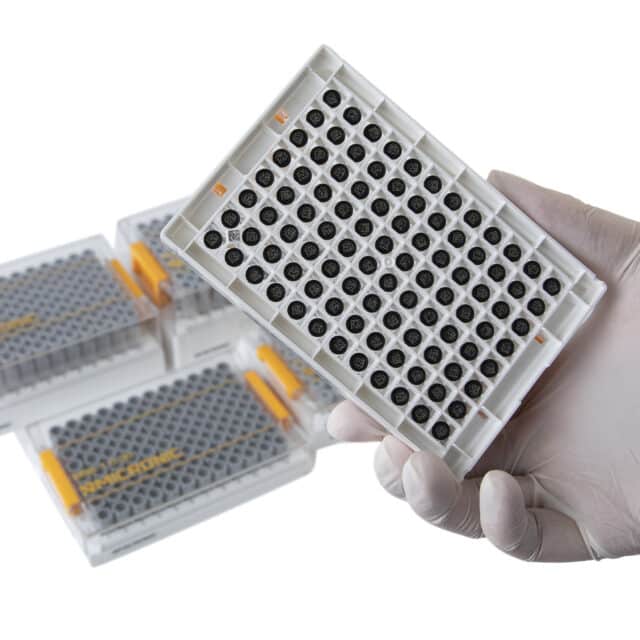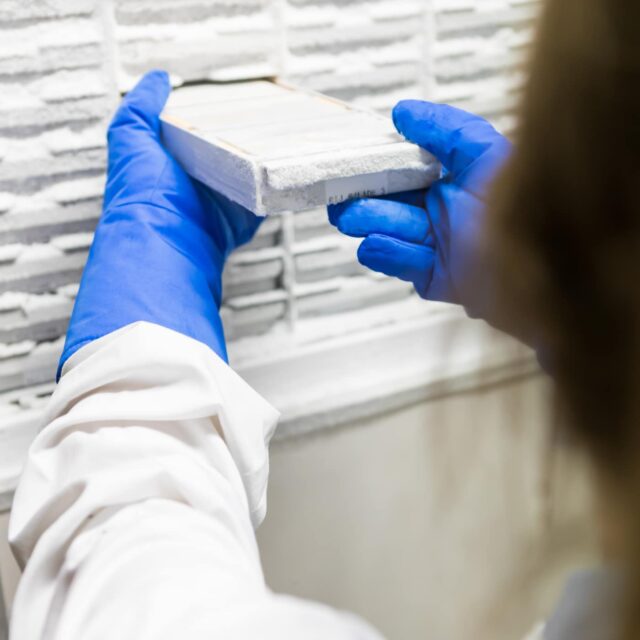
University Biobank Limburg
 There are approximately 130.000 plasma and serum samples stored for research in the University Biobank Limburg (UBiLim), which is a collaboration between the Jessa Hospital in Hasselt, Hasselt University and Hospital East-Limburg in Genk (Belgium).
There are approximately 130.000 plasma and serum samples stored for research in the University Biobank Limburg (UBiLim), which is a collaboration between the Jessa Hospital in Hasselt, Hasselt University and Hospital East-Limburg in Genk (Belgium).
The research areas vary from Multiple Sclerosis (MS) to cancer and rehabilitation research. Every year around 20.000 samples are added to the Biobank. From the 130.000 samples that are present in the Biobank, around 10% is used for research now. The samples are mostly requested by the researchers after two years of storage. Currently, the oldest sample dates from 2008!
The Biobank mainly receives their samples from patients that are participating in a study that is taking place in one of the hospitals. The blood is collected in a vacuum collection tube and send to the Biobank for processing. When the sample needs to be saved for future research, the tube will be stored in the Biobank. The following data is stored along with the sample: the time and date of the blood collection, sample processing and freezing, a unique sample code and description, a patient code and disease description. Depending on the type of research that is going to be conducted, the samples are being centrifuged a number of times. The number of centrifuge cycles is also stored with the other sample data.
Use of Micronic tubes
When the sample is ready for storage in the Biobank it will be transferred to a smaller tube size: a Micronic 0.75ml or 1.40ml internally threaded non-coded tube in combination with a Micronic TPE-Capcluster. Kimberly Vanhees, Operational Manager of the Biobank commented: “The researchers often only need a small amount of the sample for the analysis. Before the Micronic tubes we used larger sizes, and a lot of the sample would be disposed after analysis. To avoid this, we have been storing the tubes in smaller sizes, so there is no spillage of the sample anymore. In addition, using a low volume sample storage tube, we can arrange our -80°C freezer neatly and efficiently.”
Micronic offers low covers on racks for tubes that are capped with a Push Cap to save as much storage space as possible. This way a biobank can make optimal use of the freezer space. Vanhees explains, “It is a unique feature of the Micronic racks. Some other brands in the market also offer smaller tube sizes and septum caps, but the space that is left between the sample tube and the rack over makes it less efficient than with the Micronic racks. The Micronic racks make it possible to upscale the storage capacity of our freezers.”

Open for collaboration
A goal of the Biobank is to reach more external researchers to use their samples. Mrs Vanhees noted, “At the moment, mostly researchers from within the hospital and University are using the samples that are stored in the Biobank for their research, but external researchers are more than welcome to use the samples as well if they fit their criteria.” UBiLim is listed on the online platform BBMRI-ERIC. The BBMRI-ERIC Directory is a tool that collects and makes information available about Biobanks throughout Europe that are willing to share their data and/or samples, and to collaborate with other research groups. Currently, the samples stored at the UBiLim are mainly plasma and serum samples, but also PBMCs, WBCs, buffy coat, tissue and RBCs samples are part of the collection. These samples were collected for research in the following domains: autoimmunity, cardiology, COVID-19, diabetes, fertility, oncology, and neurological analyses, and many other research areas.
Mrs Vanhees is very satisfied with the Micronic tube storage solution and highly recommends it to other labs: “We are very happy with the tubes of Micronic, it is truly more efficient and space saving than we had in the past. Next to that, the fact that the tube positions are laser-etched in the rack itself is very helpful. We always know where the A1 tube is located.”

Download the interactive catalog
Contact us with any questions you might have